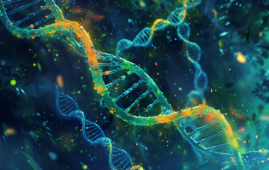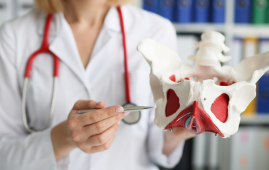

A spider venom molecule being studied by a University of Queensland team has met essential criteria for becoming a therapy for heart attack and stroke.
Associate Professor Nathan Palpant and Professor Glenn King of the University of Queensland’s Institute for Molecular Bioscience previously demonstrated that the therapeutic candidate Hi1a protects cells from damage caused by heart attack and stroke.
Dr. Palpant stated that a following study put the medicine through a number of preclinical tests designed to simulate real-world therapy circumstances.
“These tests are a major step towards helping us understand how Hi1a would work as a therapeutic – at what stage of a heart attack it could be used and what the doses should be.
We established that Hi1a is as effective at protecting the heart as the only cardioprotective drug to reach Phase 3 clinical trials, a drug that was ultimately shelved due to side effects.
Importantly, we found that Hi1a only interacts with cells in the injured zone of the heart during an attack and doesn’t bind to healthy regions of the heart – reducing the chance of side effects.” – Dr. Nathan Palpant, Associate Professor, UQ’s Institute for Molecular Bioscience
Professor King, who recently received the Prime Minister’s Prize for Innovation for producing the world’s first insecticides derived from spider venom, identified Hi1a in the venom of the K’gari funnel web spider.
“Hi1a could reduce damage to the heart and brain during heart attacks and strokes by preventing cell death caused by lack of oxygen,” Dr. King added.
“Our testing and safety studies from independent contract research organisations has provided evidence that Hi1a could be an effective and safe therapeutic.”
The researchers co-founded Infensa Bioscience, which raised $23 million in 2022 to commercialize Hi1a.
Associate Professor Mark Smythe, CEO of Infensa and a University of Queensland researcher, stated that cardiovascular disease is the leading cause of mortality worldwide.
“Most deaths from cardiovascular disease are caused by heart attacks and strokes, yet there are no drugs on the market that prevent the damage they cause,” stated Dr. Smythe.
“An effective drug to treat heart attacks would have worldwide impact, providing a breakthrough to improve the lives of millions of individuals living with heart disease.”
For more information: Acid-sensing ion channel 1a blockade reduces myocardial injury in rodent models of myocardial infarction, The European Heart Journal, https://doi.org/10.1093/eurheartj/ehad793
more recommended stories
 Gestational Diabetes Risk Identified by Blood Metabolites
Gestational Diabetes Risk Identified by Blood MetabolitesKey Takeaways (Quick Summary for Clinicians).
 Phage Therapy Study Reveals RNA-Based Infection Control
Phage Therapy Study Reveals RNA-Based Infection ControlKey Takeaways (Quick Summary) Researchers uncovered.
 Pelvic Floor Disorders: Treatable Yet Often Ignored
Pelvic Floor Disorders: Treatable Yet Often IgnoredKey Takeaways (Quick Summary) Pelvic floor.
 Urine-Based microRNA Aging Clock Predicts Biological Age
Urine-Based microRNA Aging Clock Predicts Biological AgeKey Takeaways (Quick Summary) Researchers developed.
 Circadian Control of Neutrophils in Myocardial Infarction
Circadian Control of Neutrophils in Myocardial InfarctionKey Takeaways for HCPs Neutrophil activity.
 E-Cigarette Use and Heart Attack Risk in Former Smokers
E-Cigarette Use and Heart Attack Risk in Former SmokersKey Takeaways for Clinicians and Nurses.
 36-Week Pre-eclampsia Screening May Reduce Term Risk
36-Week Pre-eclampsia Screening May Reduce Term RiskA New Preventive Strategy for Term.
 Cardiovascular Risk and Sudden Cardiac Death in Diabetes
Cardiovascular Risk and Sudden Cardiac Death in DiabetesRising Sudden Cardiac Death (SCD) Risk.
 Poor Kidney Function and Alzheimer’s Biomarkers Explained
Poor Kidney Function and Alzheimer’s Biomarkers ExplainedPoor kidney function may influence levels.
 Walking Speed Before Hip Replacement Predicts Recovery
Walking Speed Before Hip Replacement Predicts RecoveryNew Evidence Points to a Simple,.

Leave a Comment